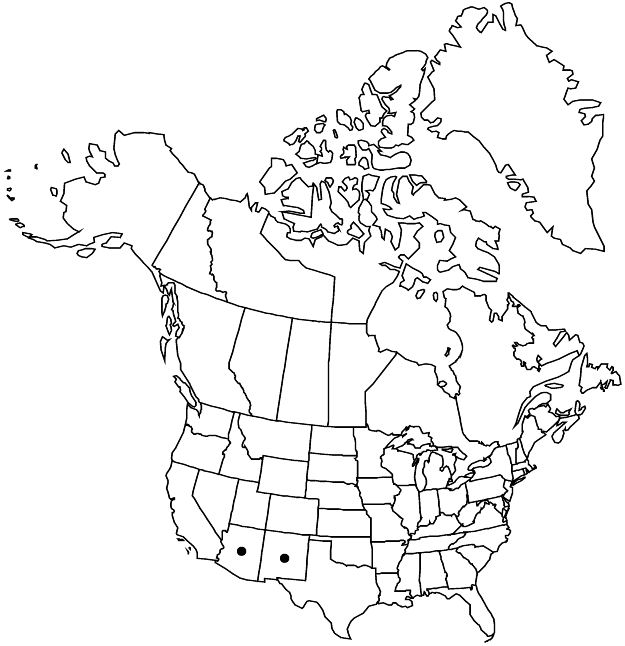Anoda thurberi
Proc. Amer. Acad. Arts 22: 299. 1887.
Herbs, 1 m. Stems erect, with minute stellate and glandular-hairs, hairs to 0.2 mm. Leaves: petiole 1/2 to equaling blade, with minute stellate and glandular-hairs (hairs to 0.2 mm); blade concolorous, sometimes with purple blotch along midvein, ovate-cordate to hastately 3-lobed at base (distally unlobed) or narrowly triangular, 5–8 cm (often smaller), membranous, base cordate to truncate, margins subentire, apex acute, surfaces minutely hairy, hairs usually stellate. Inflorescences usually racemes or panicles. Pedicels 1–3 cm. Flowers: calyx 3.5–6 mm, accrescent to 6–8 mm, lobes without dark midrib, apex acute, stellate-hairy; petals bluish lavender (darker at base), 4–7 mm; staminal column stellate-hairy; style 6–8-branched; stigmas glabrous. Schizocarps 6–8 mm diam., minutely hairy; mericarps 6–8, with dorsal spur to 1 mm. Seeds with endocarp absent or incomplete. 2n = 26, 28.
Phenology: Flowering late summer–early fall.
Habitat: Deciduous forests, dry, open shrublands
Elevation: 900–2300 m
Distribution

Ariz., N.Mex., Mexico
Discussion
Anoda thurberi occurs only in Cochise County, Arizona, and in New Mexico west of the Chiricahua Mountains in low subsaline valley areas. In Mexico it is widespread from Sonora south to Oaxaca.
Selected References
None.